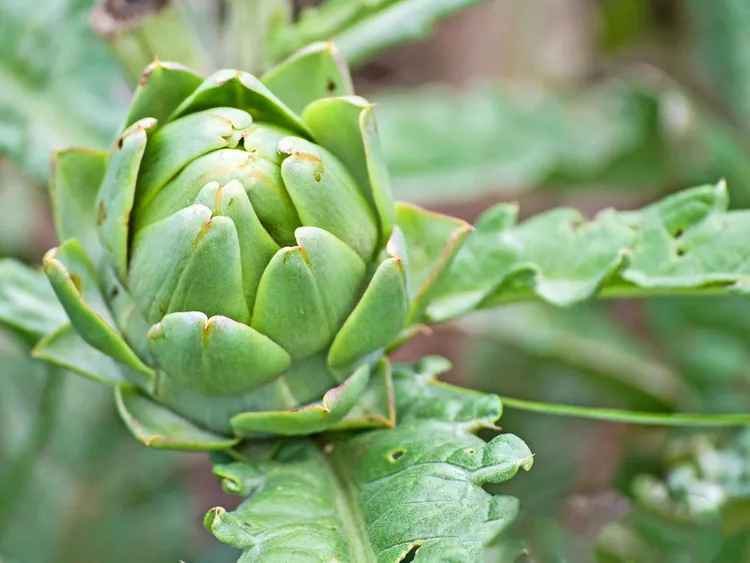You have two strikes if you want to plant in an area with dry, shady soil. Some plants can survive without water or sunlight. These plants are ideal for areas that pose problems, such as beneath trees or the eaves on north-facing walls.
Keep in mind when planting under trees that the roots of the tree will absorb much of the water available and provide a lot of shade after the leaves have filled in. The eaves of houses can shelter plants from rain in an unfavorable way.
Fixes for Shady, Dry Plantings
Tolerating a dry shade environment is different from thriving there. Most plants that can tolerate dry shade will thrive if they are given an average amount of moisture. Some plants will bloom better in partial shade as opposed to full shade.
You can increase your chances of success by adding organic matter to the soil (compost, for example) before planting in areas with dry shade. This will improve the soil’s ability to retain water. Sandy soils can be like sieves, and they are known for losing water quickly. Composting such soils is like adding sponge pieces to it.
The Shade-Loving Plants & Flowers You Can Grow That Do Not Need Tons Of Sun
01
Hosta
Plantain lily in the garden.
Plantain lilies (Hosta spp.) They are known for their mass, and they can be hardy up to zone 3. Even a medium-sized type can reach a height of a foot or more, and have a wider spread. Some larger types, like “Big Daddy”, can grow to be much bigger (2 feet tall by 3 feet wide). Hostas create a dense, leafy garden that chokes out weeds. They can be used as a border if they are planted in rows. This plant group has many different appearances, including variegated leaf (as with “Patriot”, a small hosta that measures about 1 foot by 2 feet).
02
Lilyturf
Perfect Purple
Lilyturf, also known as Liriope Spicata (and sometimes called “border grass”) looks like grass. However, it’s actually a member in the Lily family. This plant is suitable for zones 4-10. It has a spikey flower that ranges in color from lavender to white. It bears dark berries in autumn. Liriope Spicata is also known as “monkey Grass” and can be invasive.
03
Foxglove
Pink Rose Flower Close-up
Foxglove is known for the showy display of its flowers. It is one of the largest plants that can be grown in dry shade (between 2 and 5 feet high, with a width between 1 and 2 feet). Do not plant foxglove near small children as it is poisonous. The majority of foxgloves can be grown in zones 4-10.
04
Stella de Oro Daylily
Stella de Oro flower.
Stella de Oro is not a “daylily” in the traditional sense. Its flowers are only present for a single day. However, this perennial will still give you a good show. A new bloom will soon replace the one that has just faded. This 12-inch-x-12″ plant is perhaps the most popular daylily because it can rebloom for a long time. This is due to the fact that it can adapt to many different planting zones (from 3 to 9) as well as conditions such as dry shade.
05
Bugleweed
In a meadow, you can see the bugleweed
Bugleweed, although not as invasive as English ivy in North America, should still be treated with care. This ground cover spreads via runners. It is great if you are looking to fill in an area that is empty, but not so good if the plant will be growing next to other plants. If you plant this invasive near a flowerbed, you will have to pull up all the runners that are produced.
Ajuga reptans grows 6 to 8 inches high and wide, and is suitable for zones 3 to 10. Some cultivars, like ‘Black Scallop,’ have beautiful (dark) foliage in addition to the blooms.
06
Japanese Spurge
Japanese Pachysandra, or Japanese Spurge (Pachysandra terminis), with raindrops and evergreen groundcover, Bad Reichenhall in Upper Bavaria. Germany.
The Japanese spurge, Pachysandra terminis, produces white flowers in the spring. However, it is primarily grown for its lush green foliage. It grows to 6 inches high and 12 inches wide. It can be grown in zones 4-8. This ground cover is not to be confused with the purple wood spurge, Euphorbia purpurea.
07
Vinca Minor Vines
Vinca minor with blue flowers.
Vinca minor, which produces adorable blue flowers in the spring, is a great option for those who want something more than just greenery. This plant can become invasive if it is not maintained consistently.3 The vines grow up to six inches high and the plants themselves can reach 18 inches. It can be grown in zones 4-8.
08
Spotted Dead Nettles
Pink flowers on dead nettle.
The silvery leaves and showy flowers of the spotted dead nettle are quite attractive. Lamium maculatum can be considered invasive4, but if you are careful, it will not cause you any major problems. It can grow up to 12 inches high and spread out at least twice as wide.
09
Foamflower
The tiny white foamflowers, also called Tiarella, are in full bloom during the spring.
You can find wild foamflowers (Tiarella Cordifolia) in the eastern North American woods. Although it is not a particularly showy plant, there are other species and cultivars that are more showy (Tiarella “Cygnet” or Tiarella polyphylla). Foamy bells are produced by combining coral bells with Heuchera. This small perennial (1 foot by 2 feet) can be grown in zones 4 through 9.
This is one of the best choices for plants you can plant and then forget about. Native plants can take care of themselves because they are adapted to the region.
10
Lenten Rose
Light-pink Lenten rose blossom.
Lenten Rose (Helleborus Orientalis) isn’t a rose at all, but its flower buds look similar to rosebuds. Even the name “Lenten Rose” can be misleading. In warmer climates, the blooming may occur around Lent according to the Christian calendar. In the colder parts of North America and Canada for example, the blooming will be much later. This perennial can grow to 18 to 24 inches high and 18 inches wide. It can be grown in zones 4-9.
11
Barrenwort
Rose Queen Epimedium Image
In zones 5 to 8, Epimedium grandiflorum “Rose Queen” offers interesting flowers as well as nice foliage. The mature size of the plant is between 12 and 18 inches high. Its rhizomes will allow it to fill in the dry shaded area on your land that so many plants struggle in.
12
Japanese Rose
Kerria bush with single flower in bloom.
If you want a larger specimen to tolerate dry shade, then try Japanese roses (Kerria japonica). This is a zone 4 to 9 shrub that can grow up to 8 to 10 feet high and wide. It can be pruned to keep it smaller. The kelly green bark that is so beautiful in the winter helps to compensate for its tendency of spreading.





